Macabre surprise: On 9 August, in the evening, during a field visit by the members of the National Commission for the Human Rights- CNIDH, the Judicial Police, police unit in charge of Civil Protection and agents of the National Intelligence services- SNR to verify the information reported by Iwacu, another body was found in the area where, according to several sources, the journalist, Jean Bigirimana, would have disappeared.
A story
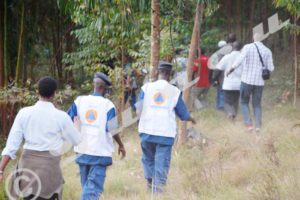
In single file, Iwacu journalists, members of the CNIDH and police civil protection down to the valley
This is a kind of investigation where journalists would be wrong, even become the world’s laughing stock and be heavily criticized. Which journalist would rejoice to find the bloated body of his colleague in a river … Journalism career creates strong ties. For some, Jean Bigirimana is only a name. For Iwacu journalists, he is a friend, a workmate, a father of two kids aged 8 and 3 years. Working on this investigation took on another dimension…
On Friday, the team returned empty-handed from the edges of the Mubarazi River, where information reported the disappearance of the journalist. The night stopped their investigation.
Saturday on 6 August, to their surprise, the Iwacu journalists found on the field some officials including , members of CNIDH, police officers, a prosecutor and even agents of the intelligence service. This official and “joint” search did not work and didn’t yield anything.
For Iwacu, we were not in the investigation, but in communication. And then, the information became scarce that day.
Journalists noted that the population feared to speak. The next Saturday, once again, the Iwacu reporters returned empty-handed, but with some information gathered secretly unlike this large delegation.
But journalists went back convinced that the population of the area knew many things, but, they would only speak discreetly.
Sunday on 7 August, back on the field. The Iwacu journalists were alone that time. And then, they discovered the body.
Without proper equipment, and the possibility of approaching a little more, they returned with this distant image of a body blocked by stones in a river. The information was transmitted to the CNIDH and published.
Here, it is important to remember the denigrating campaign of the journalists’ work observed in some localities. The police spokesman denied even the discovery by Iwacu journalists, saying that for the police, there was nothing, and no body had been found in the area. In an interview with “Jeune Afrique”, asked whether or not the police would work on the information reported by Iwacu, he contemptuously said “no.”
However, it is important to stress and welcome the involvement of CNIDH which, unlike the police, agreed to make verification on the ground.
Back on the field..
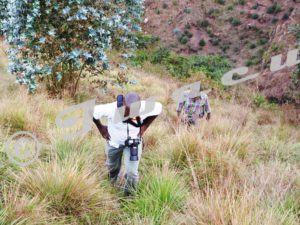
Tuesday, two of the four journalists back from Bihongo valley where they discovered another body
The Iwacu journalists who made the macabre discovery on Sunday August 7th were invited to be the guides. Some would find it odd that journalists were more effective than the police, but the debate is not there…
Tuesday on 9 August, around 10 a.m., the Iwacu journalists informed that a delegation of the CNIDH plans to go to the Mubarazi River. Around the chief editor, a small unexpected meeting in his office to organize a search visit. “Guys, we must go back again to Muramvya maybe that there will be an identification of the body that we discovered last Sunday.”
Veteran of investigative journalism, he gave professional recommendations.
Around 1p.m., the team of reporters set out to Muramvya, central province of Burundi. But an inconvenience: on the Bugarama road, all vehicles were ordered to stop; a motorcade of a high authority must pass. Ten minutes passed, tic-tac, tic-tac, the minutes ticked by and the sun beat down.
Finally, one hour after, a 4 × 4 vehicle type with tinted windows was driven at high speed. A relief. All vehicles took back the road; we should gain back the lost time. We had to arrive at the scene before it became dark.
Along the way, the journalists received a call from a Deputy Commissioner of the Judicial Police in Muramvya asking them to go to his office in Muramvya. They obeyed. Iwacu has always said that it would cooperate with the authorities.
At Muramvya province chief town, they were joined by the chief of intelligence service of Muramvya province. Half an hour later, a stamped CNIDH vehicle arrived. There, remained only the civil protection team to go down to the Mubarazi.
At 16h, the latter arrived, some of them got on the pickup of the chief of the intelligence service in Muramvya. There were
not enough places, others got on the CNIDH vehicle.
The team decided to take the road without the Red Cross. “In any case it is too late, on this Tuesday we will only do the location scouting and evaluation of work ahead of us,” said one of the civil protection police officers apparently disappointed by the absence of the Red Cross.
“We are not equipped to remove the bodies from the rivers. We need appropriate equipment for this kind of work. We do not even have special bags to pack the body. When such cases arise, we turn to the Red Cross to help out,” said another agent of the civil protection police.
Was the body still there?
It was 4:30 p.m when the team decided to continue the rest of the way on foot. Vehicles are parked at the place commonly called ” Concasseur ”.
After half an hour walking in single file, the descent to the Mubarazi began.
Iwacu journalists went ahead “It is you who know the place, you have to show us the way,” said the Deputy Commissioner of the Judicial Police in Muramvya.
We had to hurry up because it was getting late and the night falls quickly in those parts.
They all began to walk down the Nyabisiga hill of the Bugarama area towards the Gatamera hill where the Iwacu journalists saw the body stuck between the stones, close to the so-called Bihongo fall.
Via whatsapp on “Finding Jean” group, Antoine Kaburahe, Leandre Sikuyavuga and the Iwacu staff followed in real time the progress of the team on the field.
“At Iwacu everybody is concerned. This body found and photographed on Sunday, is it still there?” wondered the journalists.
“I imagined a little all kinds of criticism that were made by all those who do not like the Independent Press, we would be accused of providing false information to embarrass the current regime …” said Antoine Kabura
And suddenly, everyone was frozen .It was always there! At the bottom of the ravine. Motionless. Hands raised to the sky as if imploring mercy.
In the group, the silence was deafening. We just heard the sound of the Mubarazi flowing water, indifferent. “It must be identified” whispered the journalists who seemed to lead the operation. All decided to go down to the river to see up close the corpse. The police went first. Each step was taken with care: that fall could be mortal.
The slope was steep.
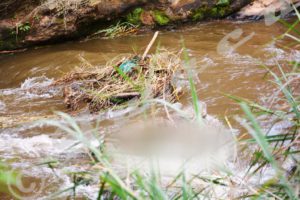
Hidden by stones, a second body that journalists had not noticed Sunday
Suddenly journalists who remained upstream came to realize, not far from the body, another strange form in water. They called out to the team down and discovered another dark mass in the Mubarazi. Surprise. Getting closer, the journalists and civil protection police officers identified a second body! It was tied up and decaying, like the first.
The journalists took a few photos of the bodies, images that we decided not to show. They were horrible.
“Sunday I had seen it, but I thought there were stones,” exclaimed one of the journalists who returned to the scene.
Iwacu reporters remembered that the surrounding population spoke of “11 bodies wrapped in bags that they saw in the very place a few days ago.” How many bodies are there in the corner? This is the question that everyone asked.
In the evening silence, journalists, the police and the CNIDH delegation were all watching wordlessly these rotten bodies.
The police and civil protection agents had no equipment. They decided to return on Wednesday accompanied by a team from the Red Cross.
“It is they who are specialized for this kind of work. They are equipped. We will collaborate”, said one of the civil protection agents.
Without a word, everyone took their way back. In single file. In the dusk, casting a last glance in the bottom of the ravine through which flows the Mubarazi, we could see these two still bodies as if they were waiting for deliverance.

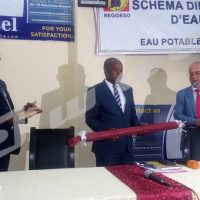

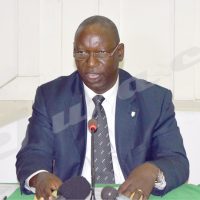
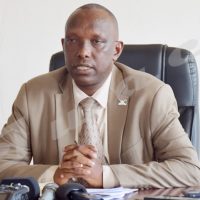
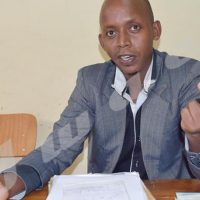













 IWACU Open Data
IWACU Open Data

